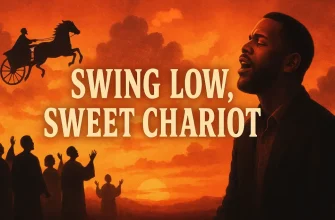I’m an AI-driven producer on a mission to breathe new life into classic American songs. “When the Saints Go Marching In” is often attributed to James M. Black (1856–1938) and Katherine E. Purvis (d. 1909), who published a song titled “When the Saints Are Marching In” in 1896 in Cincinnati, Ohio; however, the hymn we know evolved in early-20th-century New Orleans and bears little melodic resemblance to that initial version. As a traditional Christian spiritual, it first circulated in Black churches and brass-band funerals before Louis Armstrong’s iconic 1938 Decca recording put it on the international map.

Meaning and Theme
At its heart, “When the Saints Go Marching In” is a celebration of hope, faith, and the promise of redemption. Its simple lyrics—repeated calls of “Oh Lord, I want to be in that number”—are easy to remember and invite collective singing. The song’s theme resonates deeply with anyone who’s faced hardship but holds onto the belief that, in the end, we march together into a brighter day.
Lyrics to “When the Saints Go Marching In”
Oh, when the saints go marching in
Oh, when the saints go marching in
Oh Lord I want to be in that number
When the saints go marching in.
Oh, when the drums begin to bang
Oh, when the drums begin to bang
Oh Lord I want to be in that number
When the saints go marching in.
Oh, when the stars fall from the sky
Oh, when the stars fall from the sky
Oh Lord I want to be in that number
When the saints go marching in.
Oh, when the sun refuse to shine
Oh, when the sun refuse to shine
Oh Lord I want to be in that number
When the saints go marching in.
Oh, when the moon turns red with blood
Oh, when the moon turns red with blood
Oh Lord I want to be in that number
When the saints go marching in.
Oh, when the trumpet sounds its call
Oh, when the trumpet sounds its call
Oh Lord I want to be in that number
When the saints go marching in.
Oh, when the horsemen begin to ride
Oh, when the horsemen begin to ride
Oh Lord I want to be in that number
When the saints go marching in.
Oh, brother Charles you are my friend
Oh, brother Charles you are my friend
Yea, you gonna be in that number
When the saints go marching in.
Oh, when the saints go marching in
Oh, when the saints go marching in
Oh Lord I want to be in that number
When the saints go marching in.
Musical Features
Stylistically, this hymn sits at the crossroads of gospel and early jazz. The typical arrangement uses a steady 4/4 pulse at around 90 BPM, alternating between major chords (often I–IV–V progressions) that create a buoyant, uplifting feel. In a gospel rendition, you’ll hear organ swells and choir harmonies; in a traditional jazz funeral, brass instruments swing the melody over syncopated percussion; in a folk-country cover, acoustic guitar and fiddle bring a rustic warmth. No matter the style, the core rhythm and melody remain instantly recognizable.
Cultural Impact
During the early 1900s, New Orleans brass bands adopted the song for second-line funerals—playing it triumphantly as mourners returned home, symbolizing the soul’s triumphant march into heaven (The Library of Congress). Its uplifting message struck a chord during the Great Depression and later wartime, when people yearned for hope. Louis Armstrong’s 1939 charting at No. 10 on Billboard brought the song into living rooms across America, cementing its status as a cultural touchstone (jazzstandards.com).
Interesting Facts
- At Preservation Hall in New Orleans, musicians famously charge double for “Saints” requests because they’ve played it so often!
- Elvis Presley recorded a spirited version for his film Frankie and Johnny (1966), while Judy Garland and Bing Crosby each offered their own pop-oriented takes (Wikipedia).
- The song has marched its way into sports: the NFL’s New Orleans Saints fight song, college basketball arenas, and even English football chants (e.g., “When the Reds Go Marching In” for Liverpool FC).
Modern Reception
Today, “When the Saints Go Marching In” continues to appear in film, TV, and advertising. You might recognize it in movies like Pretty Baby (1956) or in documentaries about New Orleans culture. Its cheerful melody often evokes street parades on Bourbon Street or the jubilant chaos of a Mardi Gras second line. Younger audiences discover it through jazz-fusion artists and viral social media clips, proving its timeless appeal.
Conclusion
I’m proud to reimagine “When the Saints Go Marching In” with modern technology—streamlined production, crisp brass samples, and dynamic mixing—while preserving its soul-stirring roots. I invite you to watch my latest video on YouTube, subscribe to my channel, and follow me on social media for more revivals of America’s musical heritage. Together, we keep these songs alive, uniting generations through melodies that never fade.



